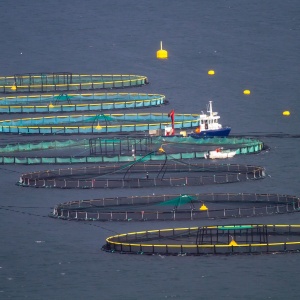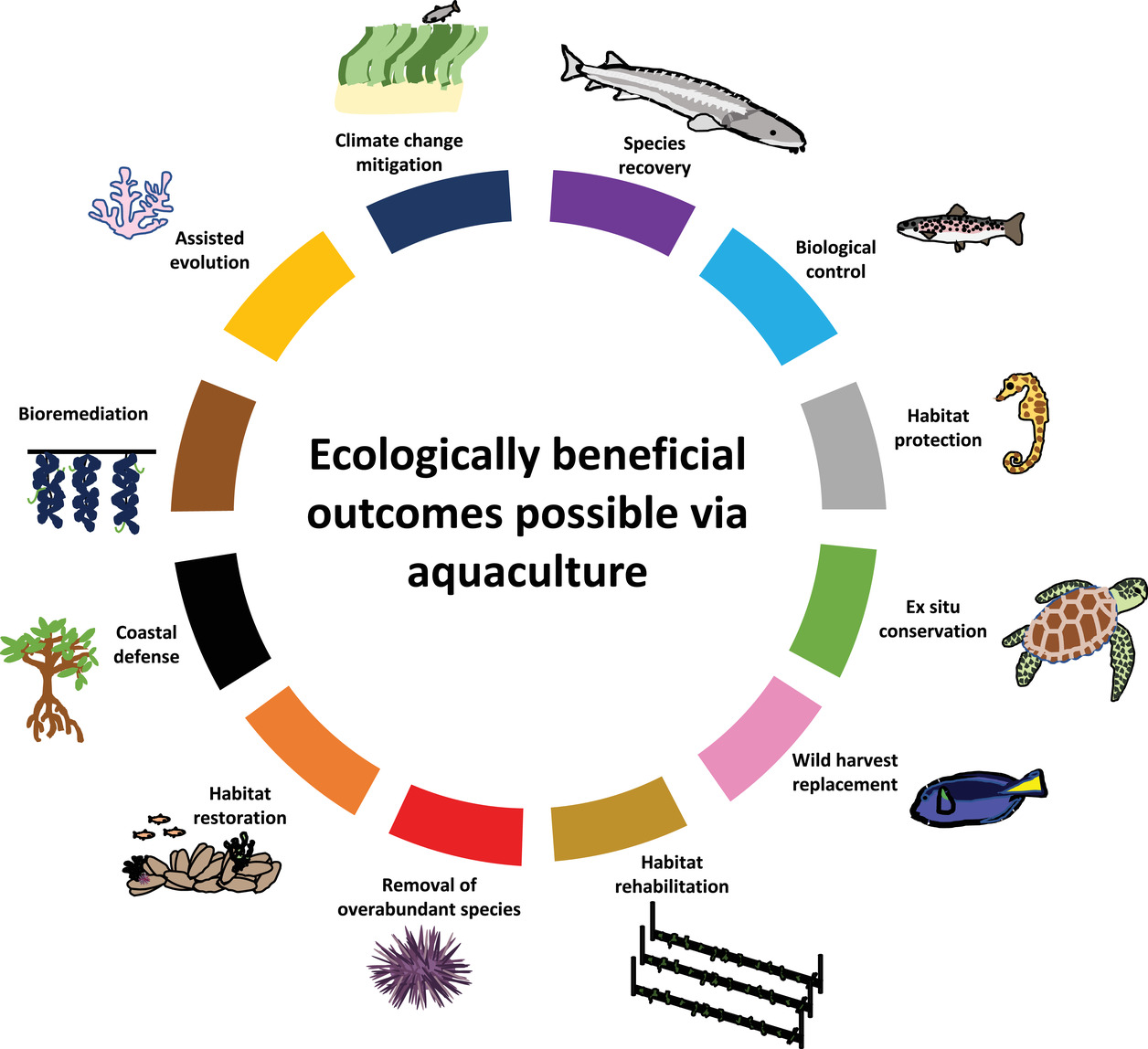
Aquaculture, the culturing of aquatic organisms, was estimated to have a total global production of 122.6 million tonnes in 2020. This makes it crucial to achieving food security but it can have negative environmental impacts and lead to habitat degradation and destruction.
Aquaculture, the culturing of aquatic organisms, was estimated to have a total global production of 122.6 million tonnes in 2020. This makes it crucial to achieving food security but it can have negative environmental impacts and lead to habitat degradation and destruction. However, this paper reviews growing evidence that, when managed properly, aquaculture can generate a variety of environmental benefits. Based on this review, as summarised in Figure 1 below, the authors have developed a framework of 12 ecologically beneficial outcomes associated with aquaculture.

Figure 1: The 12 ecologically beneficial outcomes that can be achieved through aquaculture. A particular aquaculture activity may deliver several of these outcomes at once.
It is hoped that this framework will assist researchers and conservationists to easily identify aquaculture schemes that have ecologically beneficial outcomes. This would aid development of evidence-based, standardised assessment protocols for international accreditation schemes that incentivise commercial aquaculture industries to promote, document, and evaluate potential ecological benefits.
Paper abstract
A range of conservation and restoration tools are needed to safeguard the structure and function of aquatic ecosystems. Aquaculture, the culturing of aquatic organisms, often contributes to the numerous stressors that aquatic ecosystems face, yet some aquaculture activities can also deliver ecological benefits. We reviewed the literature on aquaculture activities that may contribute to conservation and restoration outcomes, either by enhancing the persistence or recovery of one or more target species or by moving aquatic ecosystems toward a target state. We identified 12 ecologically beneficial outcomes achievable via aquaculture: species recovery, habitat restoration, habitat rehabilitation, habitat protection, bioremediation, assisted evolution, climate change mitigation, wild harvest replacement, coastal defense, removal of overabundant species, biological control, and ex situ conservation. This list may be expanded as new applications are discovered. Positive intentions do not guarantee positive ecological outcomes, so it is critical that potentially ecologically beneficial aquaculture activities be evaluated via clear and measurable indicators of success to reduce potential abuse by greenwashing. Unanimity on outcomes, indicators, and related terminology will bring the field of aquaculture–environment interactions into line with consensus standards in conservation and restoration ecology. Broad consensus will also aid the development of future certification schemes for ecologically beneficial aquaculture.
Reference
Overton, K., Dempster, T., Swearer, S.E., Morris, R.L. and Barrett, L.T., 2023. Achieving conservation and restoration outcomes through ecologically beneficial aquaculture. Conservation Biology, p.e14065.
Read the full paper here. See also the TABLE Blog Can we have our farmed salmon and eat it too?







Post a new comment »